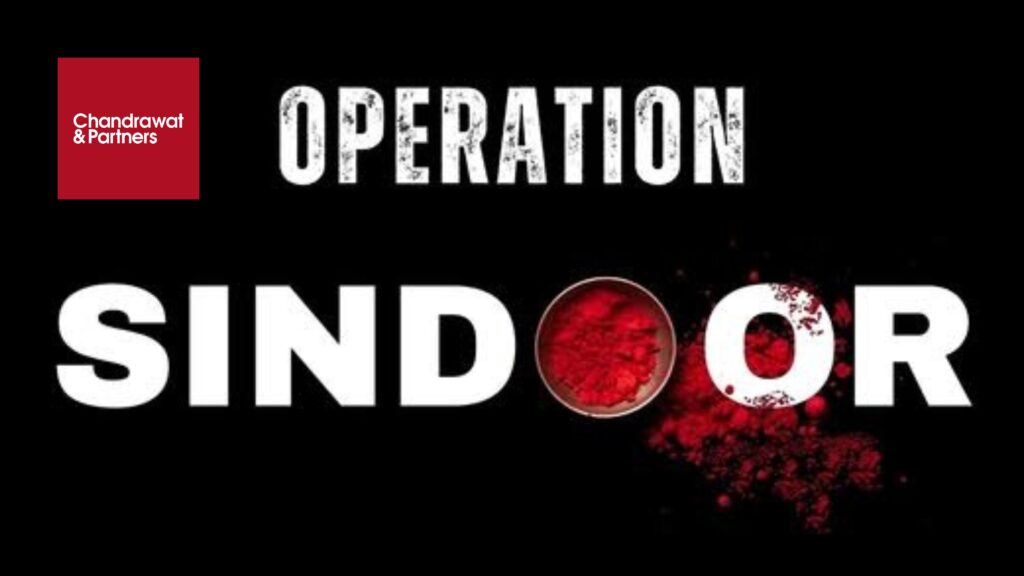Home > Recent Judgements > Operation Sindoor: India’s Strategic Pivot in Counter-Terror Doctrine
May 07, 2025
Operation Sindoor: India’s Strategic Pivot in Counter-Terror Doctrine
India will not wait to bleed
With these words echoed across diplomatic channels and military briefings, Operation Sindoor marked a sharp evolution in India’s counter-terror posture. Launched on May 6, 2025, the operation was more than just retaliation — it was a declaration of doctrine: deterrence through precision, restraint through strategy.
The Catalyst: Pahalgam Massacre and TRF’s Shadow
The tipping point was the April 22 terrorist attack in Pahalgam, Jammu & Kashmir, in which 26 civilians, most of them Hindu pilgrims were killed. Responsibility was claimed by The Resistance Front (TRF), a proxy of the Lashkar-e-Taiba, operating with support from across the Line of Control. This wasn’t the first such provocation, but it arrived in a new geopolitical context.
Unlike past responses which were limited to diplomatic condemnations or border skirmishes, Operation Sindoor was preemptive, targeted, and thematically doctrinal.
Targets & Tactical Strategy: A Decisive Shift
The operation was surgically executed over nine strategic sites, including:
- Bahawalpur – Lashkar’s ideological cradle
- Muridke – The alleged headquarters of Lashkar-e-Taiba
- Tehra Kalan, Kotli, Bhimber – Tactical launch pads
- Muzaffarabad, Sialkot – Known transit routes for infiltrators
Utilizing Rafale jets, SCALP cruise missiles, and AASM Hammer bombs, India struck deep without entering into full-scale war. The Indian Air Force (IAF) took extra care to avoid collateral damage, targeting only non-state actors’ infrastructure.
Doctrine on Display: Pre-empt, Punish, Deter
Foreign Secretary Vikram Misri, in a rare address, framed the operation as India exercising its inherent right to self-defense under Article 51 of the UN Charter. His statement made three key assertions:
- Respond – India cannot allow terror attacks to go unanswered.
- Pre-empt – There is a shift from reactive to proactive engagement.
- Deter – By raising the cost of supporting terrorism, India aims to dry up cross-border safe havens.
This is significant because it places Operation Sindoor in the same doctrinal bracket as the 2016 surgical strikes and the 2019 Balakot airstrikes, but with more surgical precision and strategic messaging.
Fallout and Escalation Risks
The Pakistani response was predictable: airspace violations, retaliation claims, and condemnation at international forums. But this time, India had prepared its diplomatic playbook in advance.
- India preemptively briefed major powers, including the U.S., France, and Russia.
- Border closures, Indus Waters Treaty abrogation, and visa bans were swift policy responses.
- Pakistan suspended the Shimla Agreement, further degrading the bilateral diplomatic framework.
Despite the inflammatory potential, both sides avoided direct military engagement beyond the initial operation. This restraint, despite losses on both sides, has been noted by global observers as a sign of strategic maturity.
The Regional and Global Lens
- India’s Strategic Signaling
India has shown that its threshold for provocation has changed. No longer is it willing to endure a cycle of “attack-condemnation-wait-repeat”. It now seeks to shape the conflict environment, not just respond to it.
- China’s Silent Watching
Given the evolving Sino-Pak strategic axis, India’s move also sends a message to Beijing: regional power projection now includes hard deterrence capabilities beyond its borders.
- A New Security Architecture?
Operation Sindoor also raises important questions for South Asia’s security architecture:
- Will India formalize a limited-war doctrine?
- Could we see the rise of a Cold Start 2.0 hybrid operational framework?
- Will Pakistan rethink the costs of hosting or supporting militant infrastructure?
Conclusion: From Retaliation to Redefinition
Operation Sindoor wasn’t about punishing a terror strike while it was about resetting the calculus. India’s decision to act with force, legality, and forethought reflects a broader national security evolution:
- No provocation will go unanswered. No sanctuary will remain safe.
As India balances deterrence with diplomacy, it is clear that the subcontinent has entered a new strategic era — one where precision airpower, preemptive policy, and calibrated risk-taking define the rules of engagement.
For more information or queries, please email us at
enquiries@chandrawatpartners.com





